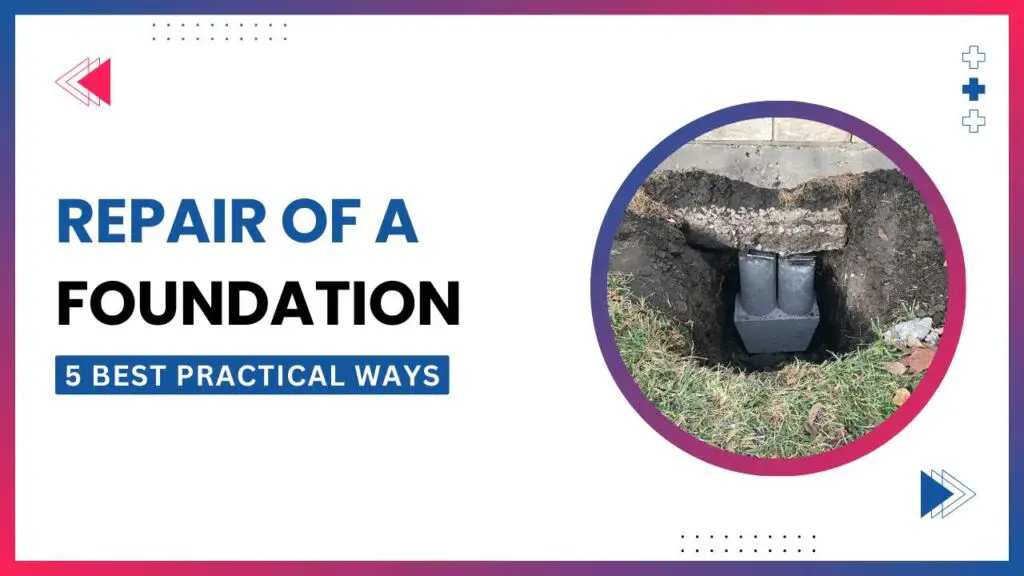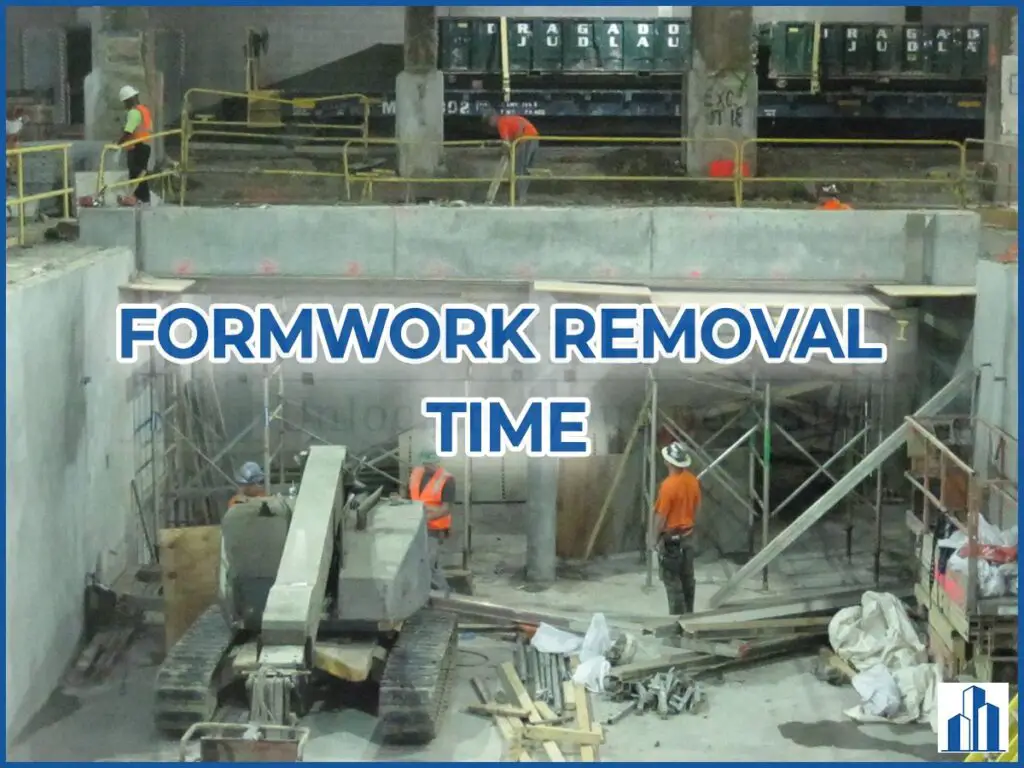A strong and stable foundation is the backbone of any structure. It provides the necessary support required for the entire building. That’s why it is essential to keep an eye on the foundation of the building.
Building structures and foundations can experience various problems throughout their lifetime due to several factors such as soil disruption, water stagnation, poor construction practices, etc. It is important to diagnose and fix these problems as early as possible.
In this article, let’s delve into some of the common signs of foundation problems, the causes behind them, and the best practical ways to repair the foundation of your building.
Signs of foundation problems
The initial and crucial step in repairing a foundation is realizing that something may not be right with your foundation.
While it might seem like an obvious first step, numerous homeowners are unaware of potential problems until they get into significant issues. Early warning signs are often overlooked due to inattentiveness or a lack of consideration.
Some of the early signs of foundation problems are listed below.
1. Cracks in walls
One of the clear signs of foundation issues is the appearance of cracks in your brick walls. However, one should notice that not all cracks are serious and harmful.
Dormant and thin surface cracks are often easy to fix and they do not impose any threat to the structural integrity of the building.
Active and wide cracks indicate that the root cause is not resolved and can pose a serious threat to the integrity of the structure.
Horizontal cracks in the wall are commonly caused by unbalanced soil pressure on the foundation walls. It can also happen due to the overloading of the superstructure.
Vertical cracks in the wall may be caused by the uneven settlement of the foundations or uneven settlement of the soil beneath the foundation. Sometimes, these vertical cracks follow the path of least resistance and result in zig-zag or step cracks.
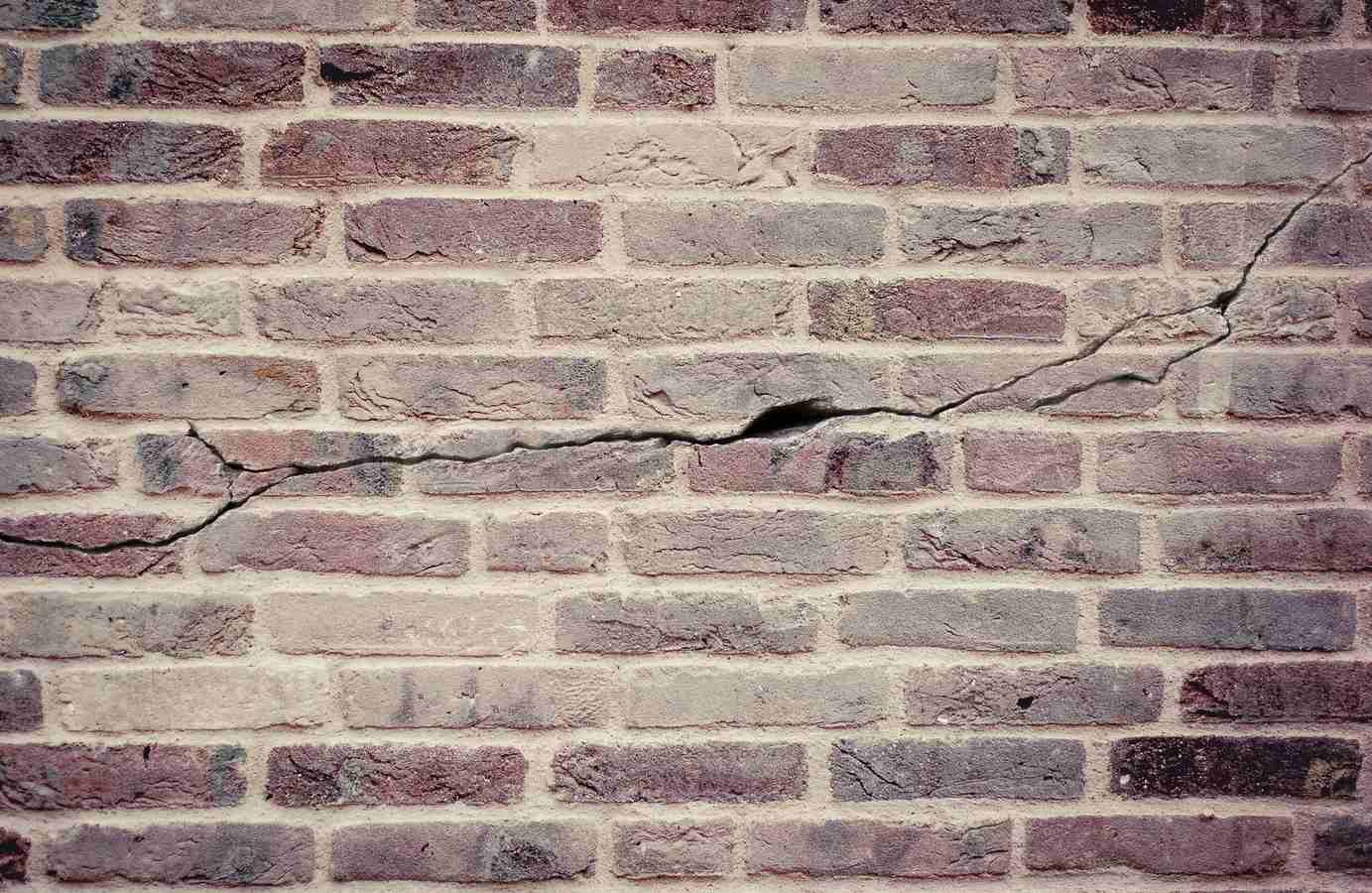
Read the article below to learn more about the brick wall cracks and its repair methods.
A Detailed Guide to Brick wall Cracks & How to repair them
2. Uneven sinking of slab/floors
If you notice that your floor slab has developed some noticeable slope or has begun to settle on the middle or one of its corners, then it could be indicative of a foundation problem. It may be due to poor soil preparation before concrete pouring.
3. Doors and Windows Misalignment
Difficulty in opening or closing doors and windows may be a result of a shifting foundation. As the foundation settles or moves, it causes the frames of the doors and windows to be twisted, so they no longer used to work like they did before.
4. Bowed or Leaning walls
Moisture can disrupt the nature of the soil. Some soils like clay react heavily to the change in the moisture content of the soil. In that case, due to processes like bulging or shrinking, the soil starts to slide in or away from your foundation.
If you have any basement area, then you can easily recognize these changes. The pressure caused by these surrounding soils can easily bulge/lean the basement wall.
Once you find out these signs, then the next step is to find out the root cause that causes these problems in the first place.
Causes for foundation problems
Several things can cause problems in foundations. Some of the major ones are listed below.
1. Soil disruption
Soil disruption is a primary cause of a foundation problem. Some types of soils such as clay or expansive soils can react heavily to a little change in the moisture content of the soil.
For example, a special type of clay called bentonite clay has the ability to absorb 4-5 times its own weight in water and can expand 15 times its dry volume when exposed to moisture content.
These kinds of oversaturation or lack of moisture conditions can lead to the soil movement under the foundation which results in various foundational problems.
2. Water damages
Excessive water around the foundation can erode the soil and cause various problems to the foundation. Hence, it is important to make sure that your house doesn’t have any potential plumbing leaks around the building or in your crawling area.
Make sure the water from the gutter downspouts is flowing far enough away from your house foundation.
3. Increase in structural weight
When you add a new room or new compartment to your house that wasn’t in the original plan, it can make your whole house heavier. This extra weight might end up causing cracks in the foundation.
4. Tree roots growing underneath a foundation
Trees which are having an invasive root structure near the building can affect the stability of your foundation.
In addition to that, it can also suck up the moisture content from the soil, resulting in contraction of the soil, eventually leading to the settlement of the foundation.
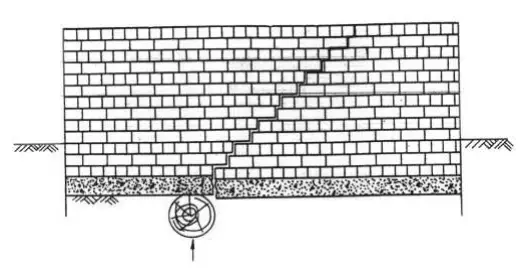
5. Poor soil preparation
Before laying the foundation slab, the soil must be prepared well enough to withstand the weight of the foundation.
If the soil appears to be loose, then it should be compacted enough to have the necessary bearing capacity. If this step is not followed properly, then in the future various problems such as the sinking of foundation slabs can occur.
6. Poor construction pratices
Poor construction practices such as the use of substandard materials, lack of waterproofing, poor drainage systems, and lack of quality control can have a ever lasting effects on the foundation of the building.
Once the root cause is diagnosed and resolved, it is time to address the existing problems in the foundation.
Foundation Repair Methods
There are various foundation repair methods available. Some of the important ones are listed below.
1. Piering
Piering generally refers to the installation of structural supports (piers) beneath an existing foundation to provide additional support and stability. This method is used when an existing foundation faces a settlement or experiencing some issues.
Piers can be made of different materials, such as steel, concrete, or helical screws, and they are driven into the ground to reach stable soil layers, preventing further settlement.
a) Steel piers – This is the process of installing steel piers underneath the foundation to provide reliable support for the foundation and to prevent further settlement. Even though steel piering is a long-term solution, it is more expensive and time-consuming.
b) Concrete piers – There are two ways to provide a concrete pier underneath a foundation. The first one is to install a precast concrete pile below the foundation by the process of pile driving and the other one is to drill holes into the ground beneath the foundation and fill them with concrete. Both methods can create a solid support system to lift and stabilize the foundation.
c) Helical piers – These are screw-like piles, having a helical-shaped blade around them, allowing them to compact the surrounding soil during installation and provide much more stability to the foundation even in shallow, unstable soil layers.
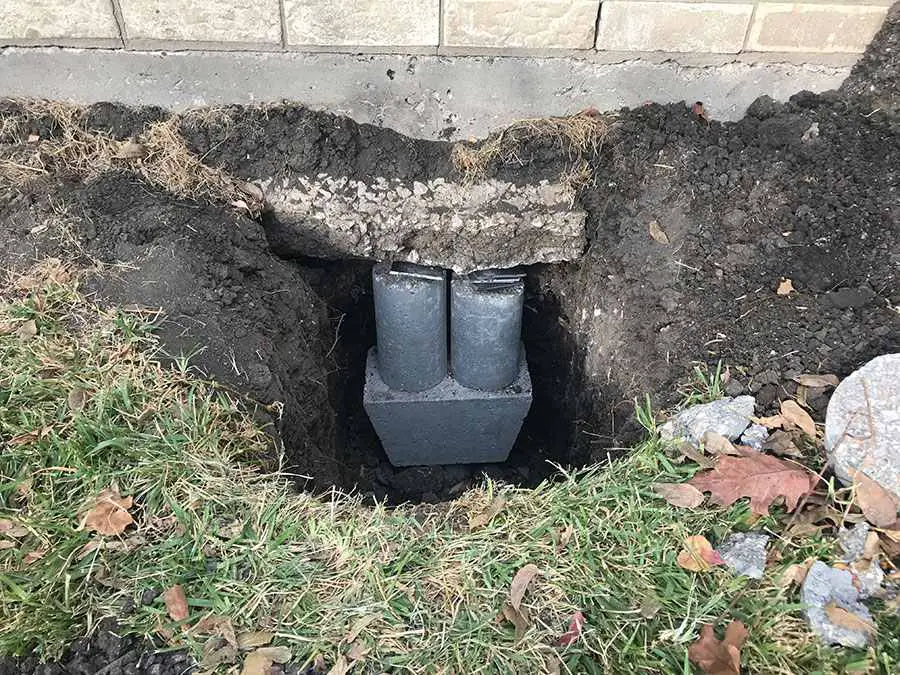
2. Underpinning
It is the process of constructing a new foundation underneath an existing one for strengthening purposes, without endangering the stability of the existing structure.
While piering is one form of underpinning, underpinning can also involve various techniques like injecting grouts or improving the quality of the soil beneath the foundation.
It is employed to strengthen the shallow footing of the existing buildings and to safeguard them from excessive differential settlement.
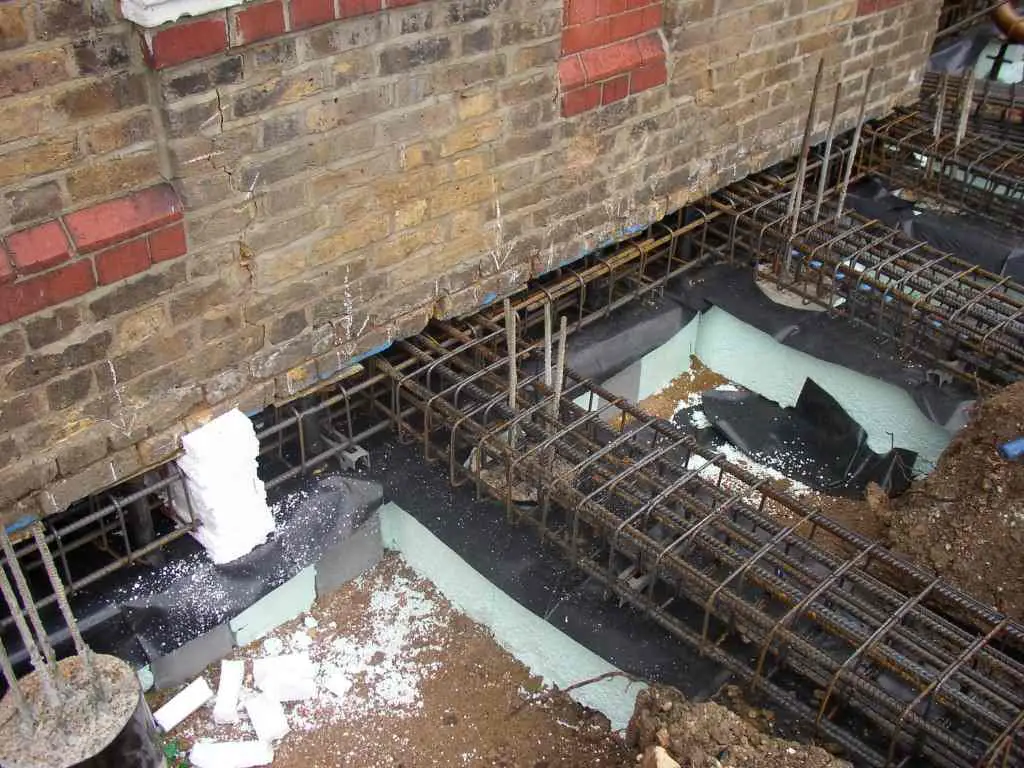
3. Mud jacking (or) Slab jacking
This process is undertaken when a specific portion of a foundation slab or floor has sunk due to the settlement of the soil below and becomes uneven compared to the rest of the structure.
To rectify this problem, a series of holes are drilled into the sunken concrete, and a mixture of cement slurry, topsoil, and water is injected to fill and lift the foundation slab.
The slurry cures over 2 days and once it is cured it is impermeable to water for a certain period of time. Many mud jacking repair jobs need to be repeated as soon as 2-5 years after application because the extreme temperature and moisture break down the slurry over time and eventually the slab will sink again.
That’s when a new material called polyurethane foam comes into the picture.

4. Polyurethane foam jacking
In this method, a special material called polyurethane foam is injected beneath the foundation through small holes. The foam expands, lifting the foundation and filling the voids in the soil.
Its curing time is much less than the mud jacking method and can be used for emergency jobs such as highway restoration etc.
Polyurethane foam is lightweight, hydrophobic, and is almost a permanent solution for a sunken slab/floor.
5. Masonry sealants
Minor cracks in the foundation can be easily fixed using patches and sealants. These are not suitable for large wide active cracks, but they are perfect for fixing and sealing minor cracks.
High-quality epoxy, polyurethane, or vinyl sealants are applied to cracks, preventing water intrusion and reinforcing the structure. These sealants are typically dried under 24 hours.
Masonry mortars may also be used to fill in and repair minor damage to the foundation.
The cost of these repair methods may vary according to various factors such as,
- Size of your plot,
- Accessibility to your foundation,
- Soil stability,
- Severity of the problem etc.
So, whatever the problem may be, it is best to take action as soon as you find out the problem, to avoid expensive repair costs.
Hope you learn everything you need to know about different Foundation Repair methods. If you find this article helpful, let us know in the comment section.
Read more:
Stamped Concrete Patterns: Everything You Need to Know
